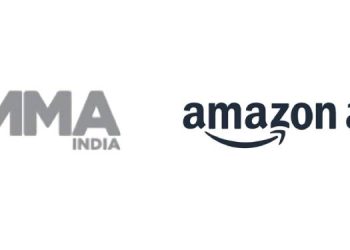
The advertising industry in the US is “over-indexed” on print, magazines and classic TV, and “under-indexed” on digital, according to WPP chief executive Sir Martin Sorrell.
Speaking at Microsoft’s Future Decoded event in London, Sorrell said that consumers in the US spend about 45 per cent of their time on their mobiles or online, but that the ad industry only invests about 24 per cent on digital.
“So we’re under-indexed there, and probably over-indexed on print and magazines and over-indexed on classic TV. The debate that is ongoing at the moment in the US by the investment community, particularly with recent media company results, is what is the future of over-the-top TV, or digital TV, or alternatives,” he said.
Later he fleshed out the 10 global trends which will shape the global ad business, previously outlined in June, detailing themes including the major shifts in the balance of power in retail, driven by proximity marketing, and the rise of new e-commerce competitors such as Alibaba, are shifting power to manufacturers.
Below are Sorrell’s 10 global trends:
Shift to East, South, and South-East
“The world is changing. New York is still the capital of the world, but there is a shift to the south, despite the volatility in Latin America – this is in our view the decade for Latin America – to the south east, Africa and middle East and East – India and China.”
Overcapacity and shortage of human capital
“In most product categories we operate in, if not all, demand is less than production. For example our largest client is Ford Motor company – it operates in an industry where, still even post Lehman, even post-bankruptcy of two of the big three in Detroit, Ford was only one that didn’t take government money, can still have production of 80 million units, and consumers can still only produce 60 million. So there is significant over production in most product categories. The largest car market in the world is now China – at 23 million units, despite some volatility recently – the US has been eclipsed in that context and is now at 16 million units.
“The paradox there is where there is a shortage in supply – and it’s in talent. The demand for talent exceeds supply.
“If you think the war for talent now is tough now then stand by. If you look at demographics in every virtually country in the world – even young countries with younger age profiles such as Mexico or Pakistan – what you will see over the years with the decline in birth rates and elongating of average age in populations due to healthcare improvement, will be a lack of supply of talent. So the war for talent will become even more important.”
Rise and rise of the web
“Then there is the issue of disintermediation. The web has created disruption. Sergei and Larry’s business [Google] is basically about the business of disruption; it’s about shortening the supply chain and delivering products and services at lower prices for consumers.
“But it’s not only disintermediation that’s disrupted, it [Google] disrupts with a lower cost business model. And new technologies are also a very attractive destination for talent. Younger people want to work in less bureaucratic, more responsive companies – very challenging particularly for legacy companies.”
Growth of retail power
“There is a basic shift in balance of power between retailers and manufacturers. The rise of Walmart, Carrefour and Tesco are all examples of companies that have controlled the relationship with consumers at point of sale. That is now changing because 50 per cent of the world’s population already live in cities, 70 per cent of the world’s population will live in cities by 2050, which means urban concentration and proximity retailing will become more important.
“Second factor in this is the rise of e-commerce – not just Amazon or eBay – but the rise from the East – Alibaba. This platform is already valued at $250m. Many people poo pooed that a Chinese Company could float for so much…
“Proximity retailing and e-commerce are changing the balance of power – shifting it from retailers to manufacturers, giving them more influence and even control with consumers.”
Importance of internal communications
“The next issue is internal communications. The big challenge of any CEO and chairman is to communicate internally strategic and structural change. Particularly for multi-brand models.
“It is no accident that the strongest professional businesses are ones that have not grown by acquisition (such as Golden Sachs) – strange for me to say that I know – and are uni-brand.”
Global and local structures
“Also we see structurally that companies are changing their approach. It is true that the global organisations are becoming more important, and somewhat paradoxically also true that local orgs are becoming more imp. What is being squeezed in most companies we talk to is the regional organisation.”
Relative power of finance and procurement
“This is slightly touchy but highly relevant – the reason why we haven’t had enough fundamental innovative thinking is the rise of finance and procurement. Bit strange coming from someone who used to be a CFO I know, but this rise in finance and procurement has been with us for last 20 years.
“…In 2008 financial world almost came to an end. GE for example was rumoured to be unable to finance its corporate finance…This was a critical weekend, and is now etched in corporate memory of most corporations we deal with, and makes them very cautious.
“Marketing has lost power to finance and procurement. As a result the propensity of companies to take risks has lessened. The risk they take at director level in relation to reward they get is very much out of kilter. But this lack of willingness to take risk is absolutely fundamental.”
Growth of government
“Government – post Lehman they had to get involved to keep many economies afloat and they remain intimately involved. Government will be heavily involved, not just as a regulator – as an investor and stimulator for fair amount of time to come.”
The acceptance of social responsibility
“Social responsibility is at the heart of every company we deal with. Every chairman and ceo puts it at the heart of the purpose of their company, and for very practical reasons. We over intellectualise this stuff – doing good is good business particularly in the context of building long-term brands. Ignore it at your peril. We know from all the data we have, that people embrace companies that put sustainability at their heart.”
Industry consolidation
“Consolidation – like it or not there will be more because of the fact we operate in a low growth world, in which worldwide GDP growth is running at about 4.5 per cent, next yr maybe a fraction better.
“In a world where the top line is not growing and there is a lack of inflation and pricing power, organisations are totally focused on cost rather than top line, and there is no limit to what you can do to top line, at least until you get to 100 per cent market share, but there is finite limit to what you can do on cost.
“What has driven consolidation in the last year is the lack of opportunity to reduce costs. So companies are looking for expansion opportunities that will help them consolidate on costs. This boom rate in mergers and acquisitions is due to a lack of opportunity in cost cutting. and it’s consolidation of clients, media owners, and of agencies.
“This consolidation wave is particularly troubling because we are seeing development of cost-reduction models. For example 3G is being run very successfully out of Brazil, and owns companies like Burger King, and there will be more, is funded by cheap long-term finance and excellent management.
“These companies are consolidating and taking out cost. An even more extreme example is pharmaceutical company Valiant, which is being very aggressive in acquisitions. Its whole model is based on ripping out R&D [research and development] cost and marketing cost to consolidate – that is a short , not long-term model. Have you ever heard of a pharmaceutical company that didn’t do R&D? These things are worrying in the context of consolidation.”

















